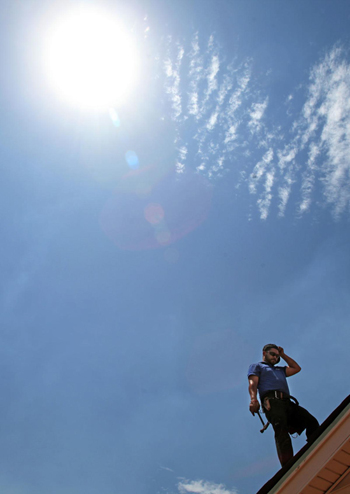By Tony Davis | Arizona Daily Star
 ore heat and drought. Less water. More heat-related deaths and hospital visits. Bigger wildfires. Fewer native trees. Maybe more valley fever cases. Someday, possibly less food and less energy, not counting solar energy. These and other impacts of warmer weather in Arizona and the Southwest are laid out in a chapter of the new federally financed National Climate Assessment devoted to this region. Together, they paint a stark picture of a region facing a wave of sudden and at times overpowering changes.
ore heat and drought. Less water. More heat-related deaths and hospital visits. Bigger wildfires. Fewer native trees. Maybe more valley fever cases. Someday, possibly less food and less energy, not counting solar energy. These and other impacts of warmer weather in Arizona and the Southwest are laid out in a chapter of the new federally financed National Climate Assessment devoted to this region. Together, they paint a stark picture of a region facing a wave of sudden and at times overpowering changes.
This Southwest report is more detailed and shows more significant impacts than a similar chapter in the last National Climate Assessment report, from May 2014.
“What we’re seeing is a transition from a climate-related nuisance to a climate-related problem,” said Gregg Garfin, a longtime University of Arizona climatologist and lead author of the new report’s Southwest chapter. “A nuisance you can brush off. But a problem is chronic.”

The Southwest is already the country’s hottest and driest region, with the world’s record high temperature of 134 degrees recorded in Death Valley National Park in California.
Looking regionally, the Southwest’s average annual temperature rose 1.6 degrees between 1901 and 2016, the new report said. In Arizona, the average temperature has risen about 2 degrees since the early 2000s, the National Oceanic and Atmospheric Administration said in a separate report. Pima County’s average annual temperature rose 2.1 degrees from the period 1895-1925 to the period 1987-2017, Garfin said.
When Garfin looks at the hotter weather’s impacts across the region, he sees “very clearly” connections between water, land use, energy, food production and ecosystems.
The drought that crippled California for much of this decade, for instance, reduced not only people’s water supply, but triggered dramatic reductions in crop production, reduced hydroelectric energy generation, damaged ecosystems and much more from major wildfires, and reduced salmon and shellfish production for coastal Indian tribes, Garfin noted.
Here are some specific impacts discussed in the report:











